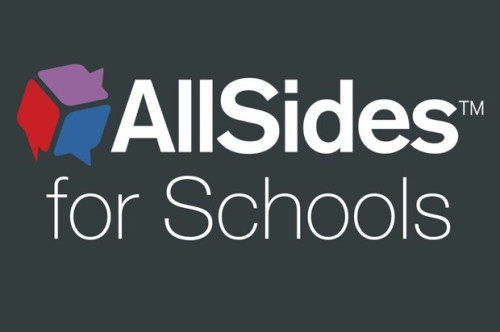
Why It’s Critical to Engage Students on Political and Social Issues
Educators are experiencing the direct impact of polarization in their classrooms, including receiving memos prohibiting the discussion of political topics with both students and staff. Additionally, a study from RAND this year found that two-thirds of teachers across the nation are choosing to limit political and social issues in class, and that “regardless of the presence or type of restriction, teachers said that they limited their instruction because they were afraid of upsetting parents and felt uncertain about whether their school or district leaders would support them if parents expressed concerns.”
Democratic society declines without dialogue. We must teach the next generation to think critically, and listen deeply when it comes to these important issues. AllSides for Schools supports teachers and parents in preparing students for civic life through balanced news, digital literacy, and dialogue. We believe engaging students on political and social issues is critical, and here’s why:
Current events are an easy hook to promote critical thinking.
Nothing will make an unengaged student suddenly sit-up and speak like a topic that impacts their life directly. Discussing with students the important ideas that will impact their future encourages them to think critically, evaluate different viewpoints, and understand the complexities of societal issues.
Civic engagement is a habit.
Teaching children about political issues fosters an early sense of civic responsibility and helps them understand their role in a democratic society, preparing them to be informed, active citizens. We shouldn't tell them what to believe, but we can expose them to all sides of an issue and teach them to think for themselves.
A classroom can be a small, trusting environment for dialogue.
Students don't always feel comfortable expressing their thoughts, asking questions, and challenging ideas. Classrooms can cultivate a culture of open and respectful discourse that promotes empathy and understanding. Students can take that kernel of confidence from a classroom setting and build up to expressing themselves in other settings.
Media literacy, digital literacy and civics prepare students for future decision making.
Children that are exposed to current events, and classroom learning that is connected to real-world issues, are better equipped to make informed decisions.
Practice makes for a better democratic society.
Students who engage in civic discussions improve communication and collaboration skills and have a better understanding of diverse communities.
With AllSides, it is easy for teachers to share current events that are balanced and appropriate for their age in a guided space where they can learn about the society they will one day run. Whether teachers use AllSides for news and perspectives, Mismatch for civil dialogue or any of the other great media literacy resources that exist, the important thing is that civics is taught.
What are students saying about AllSides?
“I believe that if you want the full story about a current event, rather than going to one news site and believing what they say, going to Allsides gives you more about what the right, the left and the center have to say about the story, and in turn give you the full story about the event.”
“I’d say my biggest takeaway is just how much the wording and rephrasing of information can change its message to create a different response.”
“My parents actually really love allsides and ever since I showed them it they have used it on many of the big news stories to see what biases there are for both sides.”
Do you want to use AllSides for Schools? Learn more at allsides.com/schools











